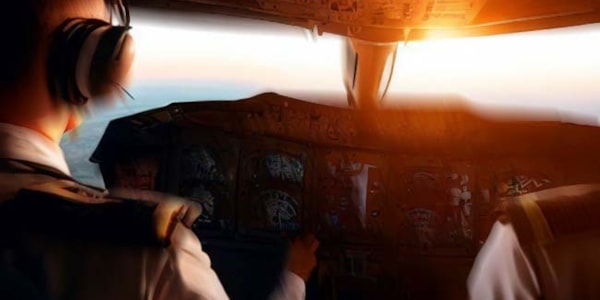5 tips for pilots to recognize and overcome spatial disorientation

In May 2021, a Cessna Citation crashed shortly after takeoff from Smyrna Airport (MQY) in Tennessee, killing the pilot and six passengers. The airplane was headed to Palm Beach International Airport (PBI) in Florida and the pilot had filed an instrument flight rules flight plan. A preliminary review of air traffic control communications and radar data revealed that the pilot was cleared for takeoff and instructed to climb and maintain 3,000 ft mean sea level, but made a series of heading changes and climbed and descended several times before the airplane entered a steep, descending left turn and crashed into Lake Percy Priest. The airplane was destroyed and most of the wreckage was recovered from the lake. The pilot held a commercial pilot certificate with ratings for airplane single-engine land, multiengine land and instrument airplane.
RELATED STORY:
Final NTSB report concludes Citation pilot experienced spatial disorientation in 2021 crash into TN lake, killing 7
Spatial disorientation is a phenomenon that occurs when a pilot loses their sense of orientation and awareness of their position and motion in relation to the earth’s surface. When pilots experience spatial disorientation, it can lead to the loss of situational awareness, delayed reaction time, panic and loss of control. It can be a dangerous condition that leads to aviation accidents and it is crucial for pilots to recognize and overcome it.
Here are five tips to overcome and recognize spatial disorientation in aviation:
Trust your instruments
Pilots are trained to use their aircraft’s instruments to maintain situational awareness, even when they cannot see the ground or other visual cues. It’s essential to rely on these instruments during low visibility conditions or when experiencing spatial disorientation.
Understand the body’s sensations
Pilots must recognize the sensations that their body experiences during spatial disorientation, such as the false sensation of turning, tilting, or banking. Being aware of these sensations can help pilots recognize and correct their orientation.
Train for spatial disorientation
Pilots can undergo specialized training to recognize and overcome spatial disorientation. The training involves simulating various conditions that lead to spatial disorientation and teaching pilots how to react to these situations.
Maintain a healthy lifestyle
A healthy lifestyle can help pilots reduce the risk of spatial disorientation. This includes getting enough rest, staying hydrated, and avoiding alcohol and drugs that can impair cognitive function.
Seek help
If a pilot experiences spatial disorientation, they should immediately seek help from air traffic control or other pilots in the area. It’s important to remember that spatial disorientation can impair decision-making and judgment and it’s essential to ask for assistance when needed.
By following these tips, pilots can recognize and overcome spatial disorientation, ensuring safer flights for themselves and their passengers.
Contact
Name: Maddie Moles
Company: GlobalAir.com Scholarship Recipient
Website: https://globalair.com
Email: [email protected]
Phone: 502-456-3934
©2023 GlobalAir.com, Maddie Moles. All rights reserved.
Recent Posts
- U.S. Travel Announces 2024 Hall of Leaders Honorees
- Comment: Cruise is part of the solution, not the problem
- World of Hyatt Announces Exclusive Alliance with Under Canvas, the Leader in Upscale Outdoor Hospitality, Adding More Immersive Experiences for Guests and Members
- Asia Pacific Hospitality Newsletter – Week Ending 19 July 2024
- Luton promises quicker security checks with new scanners





Recent Comments